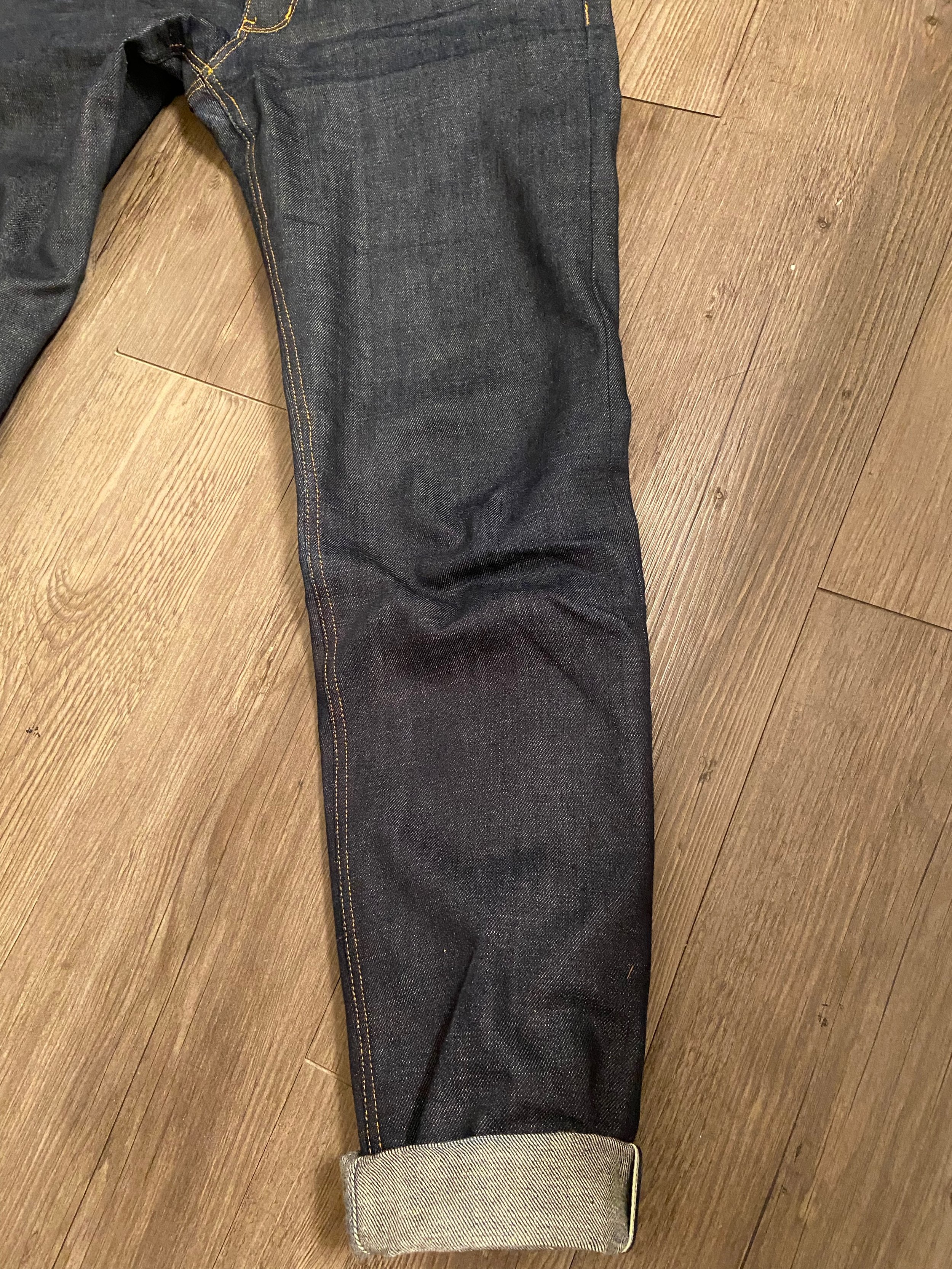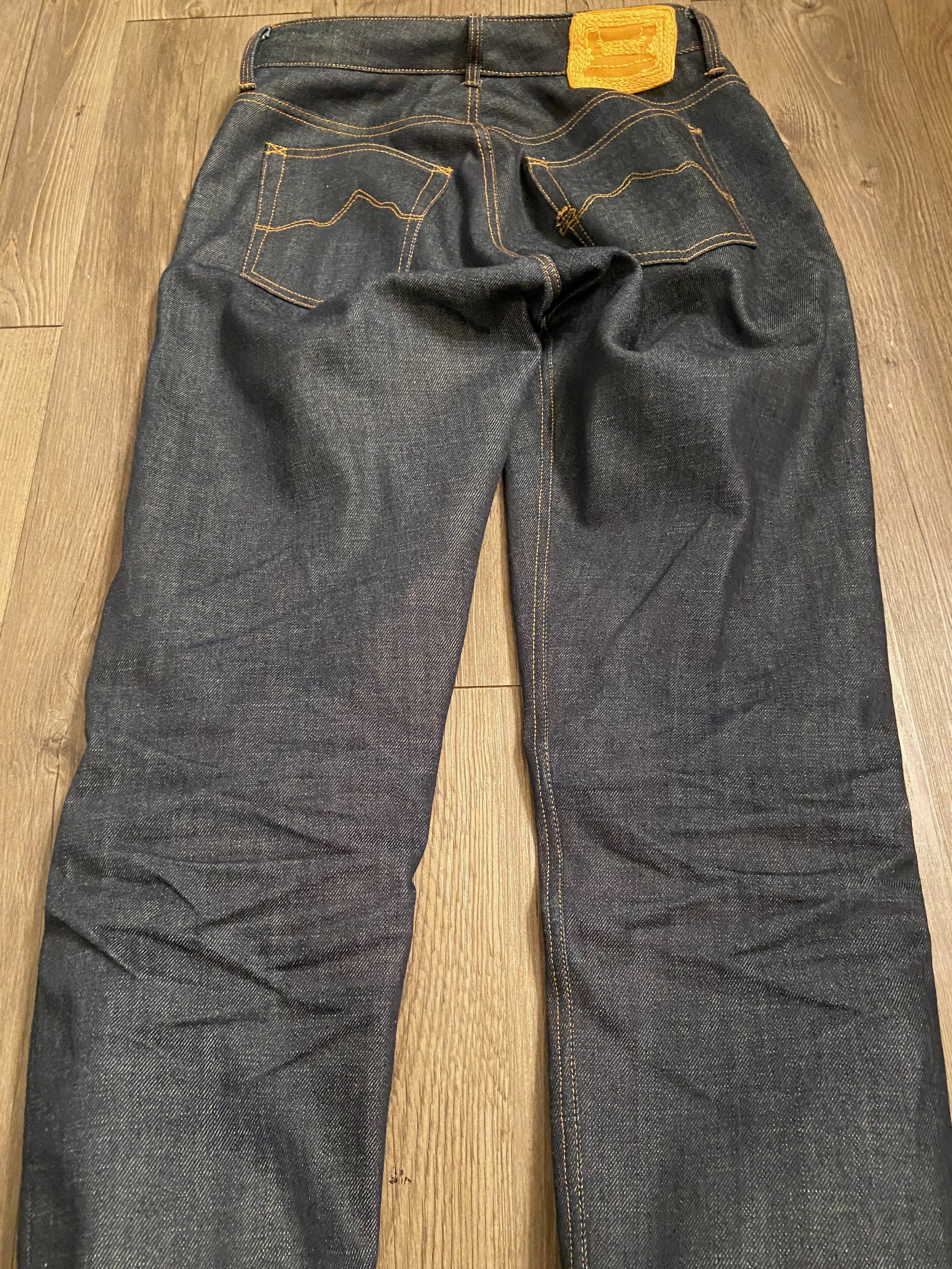Dirty Denim Project 5: Weeks 4, 5, and 6
When I was in college, I would iron my jeans. I figured it was probably about 90% procrastination, 10% bad dorm laundry facilities. I guess I should have known that if I didn’t want to write papers back then, I shouldn’t have wanted to be a writer at all. Which is also to say that I’m getting a little wearied of writing these posts, and my hands are itching to spend more of my spare time creating.
Week 4
October 25, 27, 28
I started feeling as if my jeans were too large again. I didn’t let this stop me from wearing them. I finally broke from my pattern of wearing my jeans every other day, since I did not work on Friday, and as previously mentioned, I do not wear jeans at home.
Week 5
November 2, 3
Another break from the routine. I ended up only working three days this week, and wore my jeans two of those days.
Week 6
November 7, 9, 10, 11, 12
My parents visited me over the weekend. On Sunday, we went to Salt Lake City, and I wore my jeans. I sat in two vegan restaurants, on a swinging bench in the gardens, and a few other establishments. We also hiked through some nature at Red Butte Garden, and it’s likely that I did actually get my jeans dirty (but the denim is too dark to show it). I didn’t know of the hiking plans when I dressed in the morning, but I don’t regret it. Minimal dirt and germs don’t scare me so much anymore.
Photos Courtesy of Chuck Barksdale
Then I wore my jeans every day I worked this week. I was determined to get to day 20 by the time of writing this post.
At Work, November 10
The denim is continuing to soften and grow. The only difference in measurement from day 10 is in the waistband, which is 28.75”, up .5”; consequently, the part of my body where the waistband sits is also .5” larger (28”).
I can see some additional signs of wear. The smudge of dye loss at the top of the fly, under the zipper pull, is more noticeable. I’m also able to detect the beginnings of dye loss within the bend creases at the top of the fronts, but not quite yet at the back of the knees. The front of the knees and the seat are distorted from the shape of my body.
Other Denim Inspiration
A few months ago, I was working on a production of The 39 Steps, set in the 1930s. There is one woman in the show (playing three different characters) and the original plan was for the shop to build her four different looks. With double-casting, that’s 8 dresses, and with the time and staff we had, this was not a very challenging workload. So when the designer asked if we could also make a pair of pants for the one foley artist who was a woman, I said YES, of course.
At this point in my career, I’m not too fond of sewing dresses, which works out just fine because I have other people to do it for me. But pants—I love sewing pants. So usually I’ll say that I prefer menswear, but pants for a woman is even better.
The design was communicated verbally to me as wide-legged pants—"with pockets!” so I took it upon myself to do further research on how that should actually look. Words are great, but images are better. The first pants example I showed to the designer were too wide in the leg, but then I was able to find exactly what she wanted in a drawn advertisement from some other country. With her approval, I patterned the pants as I saw them in that picture.
Source Unknown, probably from Pinterest, which I HATE
Then she brought me the fabric—it was denim. This was an entirely unexpected choice. If I had known she wanted denim pants—jeans—I would have done different research. (And, were women wearing jeans in the 1930s? More on that later.) I actually wonder if she was inspired to choose denim based off of my research, which was exclusively for pants with V-shaped yokes; an iconic shape for jeans, it was also a popular design element of womenswear of the 1930s, and it was a detail I wanted to pattern and create. But my pattern was made assuming that the fabric would be something much more flowy and soft.
I decided to just go for it with my pattern anyway, and ended up having to make some adjustments down the line. I should have known better; lesson learned. I’m trying to get to know my textiles better, and listen to how they need to be treated from the start.
After I got the denim, I asked if she might want to buy a contrasting topstitching thread? How much did she want these pants to resemble jeans? Once I had the thread, I had to make choices about where and how to use it. One row of topstitching or two? In our first fitting, the designer began to pin the hem with a cuff, as one would cuff a pair of nice pants, so only the right side of the fabric shows, and I asked if she would rather cuff it the other way, as one would cuff jeans, exposing the wrong side of the fabric. She wondered if she was bothered by seeing the navy serging on the outseam, and then I started to think about selvage denim.
I’m not sure why I knew anything about selvage denim at that point in time. I think I knew the concept but had to refresh myself on the term. But, historically accurate denim would have been selvage denim, I presumed, and that would mean seeing a contrast strip of color on the outseam of the pants. On most of my jeans, the serging is done in an orange-brown, to match the topstitching thread, which I take to be a nod to the contrast of the selvage on vintage jeans. I didn’t ask the designer, but I decided to switch the serging on these pants to a medium brown, to create that contrast.
I feel like in the end, these pants were maybe not what anyone had been envisioning in the first place, but were constantly evolving and being made better through our collaboration. They got suspenders after the first dress rehearsal to hold them up better (I happily allowed a stitcher to take on that note).
Photo Credit: Suzy O Photography
Photo Credit: Suzy O Photography
Shortly after the show closed, I saw the designer (also the costume shop manager) wearing these pants. It took a few seconds for me to comprehend what I was seeing, because I have almost no opportunities to see people wearing clothes I’ve made in real life; clothes I make go on my own body, or on the stage. I am someone who is very bad at taking compliments. I trust no one and nothing they say about my work, and have to decide for myself through other means if their praise is genuine or not. But if someone chooses to wear the pants I made (going out in public, shopping), I think I must have done something right. She wore these pants again recently, and received many compliments (more praise I can accept).
Not long after working on these denim pants, I patterned and made myself some jean shorts from some denim and thread in my stash (free shorts!). I was still having my iffy feelings about denim and jeans at that time, so I was happy to get it out of my fabric stash. And a few months later, I now have more…
July 2, 2021
A Brief History of Women in Jeans
A few weeks ago, I found this advertisement in a magazine I was reading:
It bothered me in a lot of ways, including, but not limited to, the “She Wears the Pants” line. However, it did inspire me to seek out more information on the history of women in jeans. The actual year when Lee’s original Ladies Lee Riders were introduced was 1947. According to their website, the only real difference between these “ladies” jeans and the mens was the addition of darts in the back yoke to fit a woman’s body. (They did not look like the jeans in this advertisement).
Lady Levi’s were first introduced in 1934. These were also jeans shaped like mens, with an altered cut to better fit a woman’s body. They were even advertised in Vogue magazine as early as 1935, although most women rarely wore pants of any sort except in casual settings at this time. More information about the history of Levi’s and women can be found on fashionista.com.
With this brief history on women’s jeans, I was able to feel more comfortable and confident in my style of jeans. From their origins, jeans were a masculine garment that bold women adopted for their own comfort and style. I am grateful to these pioneering women, and I can only wish I were as bold.
A Better Denim Advertisement


























